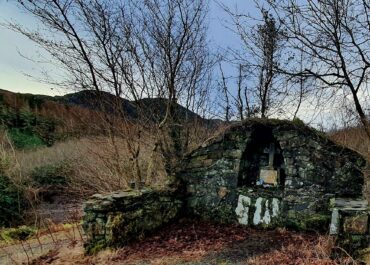Bullaun stone, Massreagh, Co. Donegal
Along the main street of Kilmacrenan in County Donegal, two ancient basin stones sit quietly amongst the everyday bustle of village life.
Bullaun stone, Massreagh, Co. Donegal
These bullaun stones, as they’re known in Ireland, are boulders with deliberately carved depressions that have puzzled archaeologists and historians for generations. The larger of the two measures just over a metre in length and features a substantial basin about 29 centimetres across and 17 centimetres deep at one end, whilst a much smaller depression, barely 5 centimetres wide, has been cut into the opposite end.
On the eastern side of the road lies the second stone, a more modest square block about 31 centimetres across. Its single depression is shallower than its neighbour’s, measuring 14 centimetres in diameter and only 6 centimetres deep. Unfortunately, no one knows exactly where these stones originally came from or when they were moved to their current positions along the street; their provenance remains a mystery lost to time.
Bullaun stones like these are found throughout Ireland and typically date from the early Christian period, though some may be considerably older. They’re often associated with religious sites, holy wells, and ancient monasteries, where they may have been used for grinding grain, herbs, or minerals; holding holy water for blessing rituals; or serving other ceremonial purposes. The varying sizes of the depressions on the Kilmacrenan stones suggest they may have served different functions, though without knowing their original context, their true purpose remains open to interpretation.


